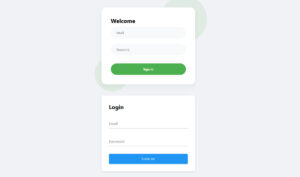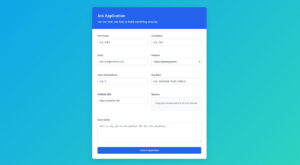Tailwind CSS has revolutionized how we create and style forms. Its utility-first approach offers a seamless way to build and customize form elements, making the task of front-end development more…
Table of Contents
Your website collects data, but does it collect the right insights? Well-designed feedback form examples transform silent visitors into vocal advocates who share valuable opinions about your products and services.
Most businesses struggle with low response rates and poor data quality from their customer surveys. The difference lies in strategic form design that encourages genuine participation.
This guide showcases proven feedback form examples from successful companies across various industries. You’ll discover templates for customer satisfaction surveys, product review forms, and user experience questionnaires that actually get completed.
From simple rating scale formats to sophisticated multi-step feedback forms, these examples will help you build contact forms that engage users and deliver the data your business needs to grow.
Feedback Form Examples
See the Pen
Modern Feedback Form with Interactive Emoji Ratings by Bogdan Sandu (@bogdansandu)
on CodePen.
See the Pen
Modern Dark Theme Feedback Form with Micro-interactions by Bogdan Sandu (@bogdansandu)
on CodePen.
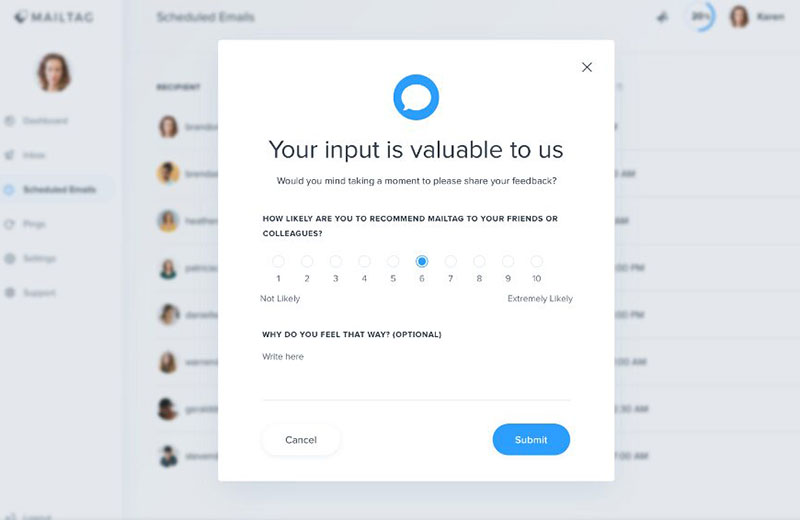
Image source: mailtag.io
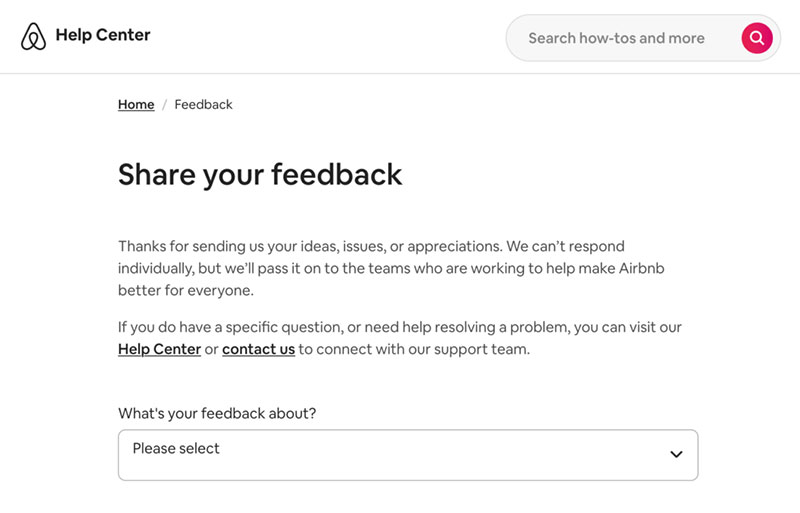
Image source: airbnb.com

Image source: apple.com
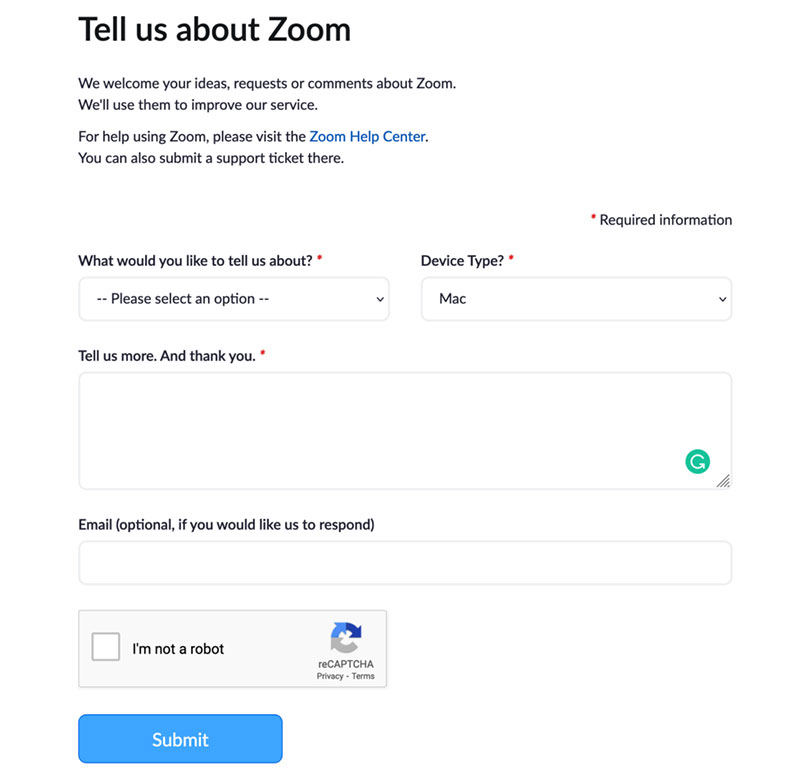
Image source: Zoom.com
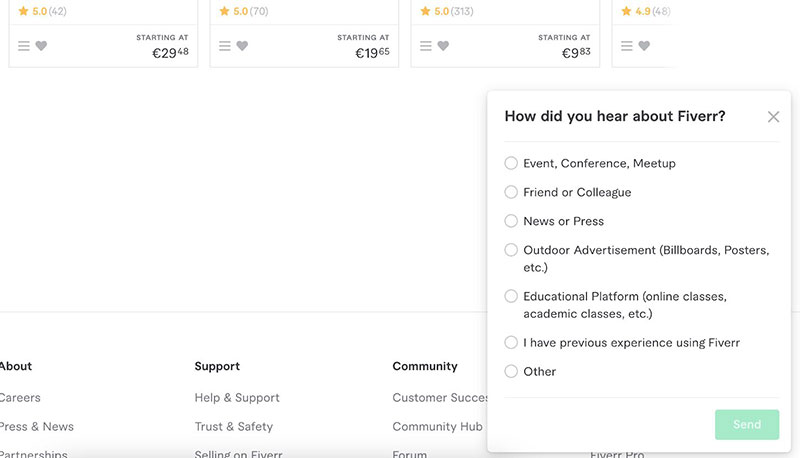
Image source: fiverr.com
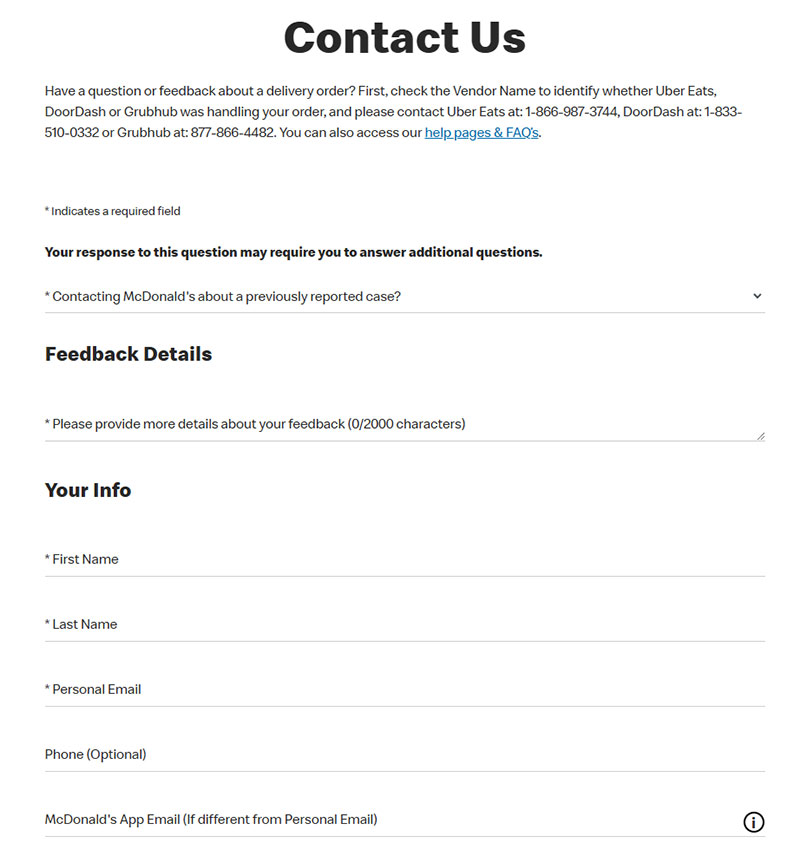
Image source: mcdonalds.com
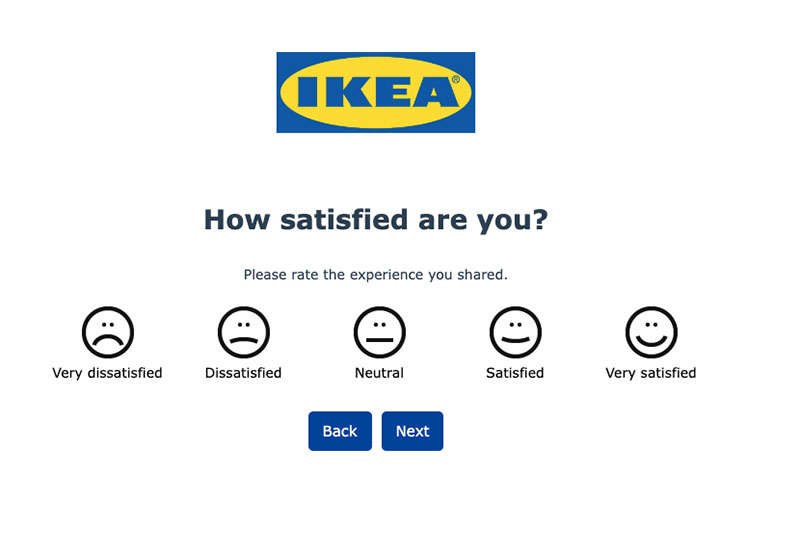
Image source: ikea.com
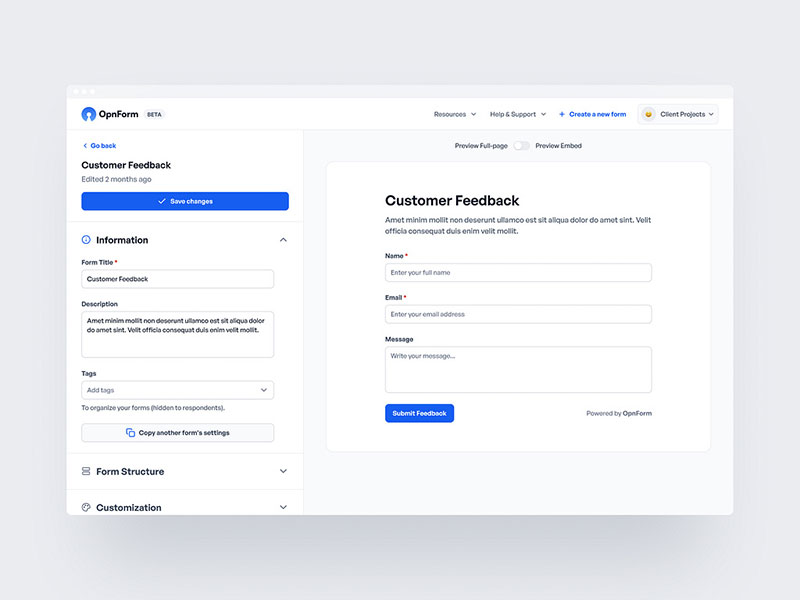
Image source: Sahil Vhora
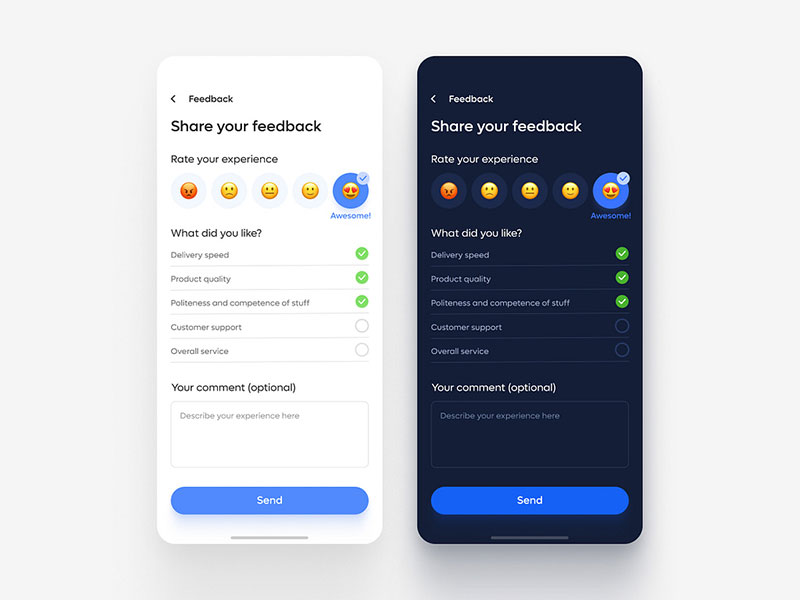
Image source: Veronica K
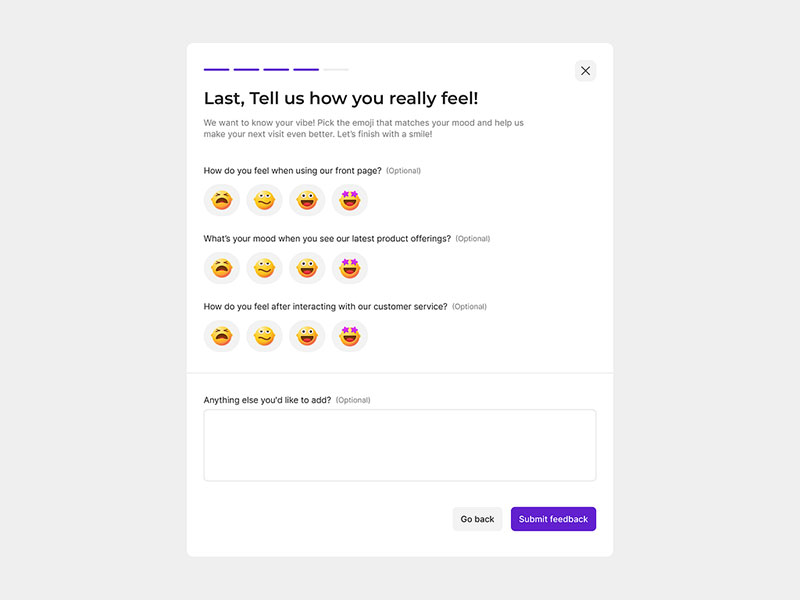
Image source: Kasper Carlsen
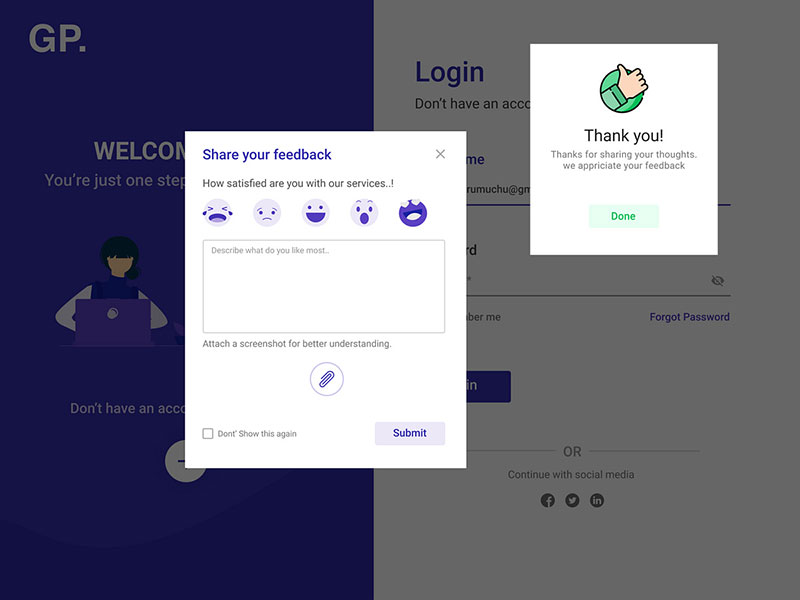
Image source: Praveen Gorumuchu
FAQ on Feedback Forms
What makes a feedback form effective?
Effective feedback forms use clear question types, logical flow, and minimal required fields. They incorporate rating scale formats and open-ended questions to capture both quantitative and qualitative data. Mobile optimization ensures accessibility across devices, while proper form validation prevents submission errors.
How many questions should a feedback form contain?
Limit feedback forms to 5-7 questions maximum to prevent survey fatigue. Focus on essential customer insights rather than comprehensive data collection. Short questionnaires achieve higher completion rates and better response quality than lengthy evaluation forms.
What question types work best for customer feedback?
Rating scales, multiple choice, and Net Promoter Score questions provide quantitative insights. Open-ended comment fields capture detailed opinions. Likert scales measure satisfaction levels effectively. Mix question formats to gather comprehensive user feedback without overwhelming respondents.
Should feedback forms be anonymous?
Anonymous feedback often generates more honest responses, especially for sensitive topics. However, named feedback enables follow-up conversations and personalized improvements. Consider your goals when choosing between anonymous feedback options and identified response collection methods.
Where should I place feedback forms on my website?
Strategic placement includes contact pages, after purchase completion, and in email campaigns. Exit-intent popups capture departing visitors. Embed feedback widgets in product pages and service areas. Avoid intrusive placement that disrupts user experience.
How do I increase feedback form completion rates?
Use progress indicators for multi-step forms, offer incentives, and keep forms short. Clear instructions and logical question flow reduce abandonment. Mobile-responsive design ensures accessibility across all devices and platforms.
What tools can I use to create feedback forms?
Popular form builders include Google Forms, Typeform, and SurveyMonkey. WordPress users can leverage plugins like Gravity Forms or WPForms. Choose platforms that offer survey automation, analytics tools, and integration capabilities with your existing systems.
How should I analyze feedback form responses?
Categorize responses by themes, calculate satisfaction scores, and identify recurring issues. Use feedback analytics tools to track trends over time. Transform qualitative comments into actionable insights. Regular analysis helps improve products and customer experience.
What are common feedback form mistakes to avoid?
Avoid leading questions, excessive required fields, and poor mobile optimization. Don’t use jargon or complex language. Skip irrelevant questions that don’t provide actionable insights. Ensure form accessibility for all users.
How often should I send feedback surveys?
Balance frequency with user tolerance. Post-purchase surveys work immediately after transactions. Quarterly satisfaction surveys track long-term trends. Avoid over-surveying customers, which leads to lower response rates and survey fatigue among your audience.
Conclusion
These feedback form examples demonstrate how strategic survey design transforms customer data collection into meaningful business insights. Companies using well-crafted evaluation forms see dramatically higher completion rates and more actionable responses from their audiences.
Key takeaways include:
- Implementing proper form design principles increases user engagement
- Conditional logic and progress indicators reduce form abandonment rates
- Mobile-responsive templates ensure accessibility across all devices
- Strategic question placement maximizes response quality
Whether you’re building customer satisfaction surveys through Formstack, creating product review templates, or developing service feedback designs, these proven examples provide the foundation for effective data collection strategies.
Remember that successful feedback collection requires ongoing optimization. Test different survey platforms, analyze response metrics, and refine your approach based on user behavior patterns.
Start implementing these feedback strategies today. Your customers have valuable insights waiting to be discovered through thoughtfully designed survey form experiences.
If you liked this article about feedback form examples, you should check out this article about contact us page templates.
There are also similar articles discussing contact us page examples, lead generation form examples, contact form examples, and intake form examples.
And let’s not forget about articles on subscription form examples, registration form examples, GDPR consent form examples, and form design.




